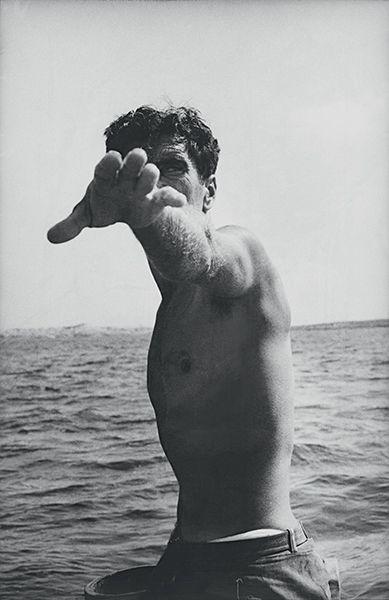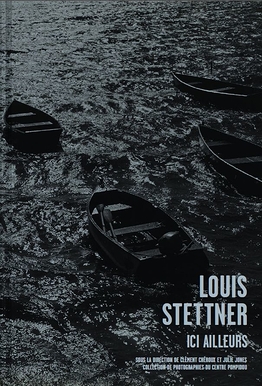Exhibition / Museum
Louis Stettner
Ici ailleurs
15 Jun - 12 Sep 2016

The event is over


Cette exposition est consacrée au photographe américain Louis Stettner.
L’exposition a pour ambition de déployer stylistiquement et chronologiquement tout l’œuvre de Louis Stettner. Couvrant près de huit décennies de création, elle dévoile la toute première série du photographe, réalisée dans le Paris de l’après-guerre à l’aide d’une chambre grand-format, à la manière d’Atget, mais aussi le New York en transit des décennies suivantes, sa longue enquête sur les gestes du travail, ou sa toute dernière série réalisée récemment dans le sud de la France, au cœur du massif des Alpilles.
Une rue de Paris à l’aube, un rayon de lumière entre deux gratte-ciels à New York, des reflets sur l’asphalte mouillé. Il y a dans les images de Louis Stettner une qualité atmosphérique que l’on ne voit nulle part ailleurs dans l’histoire de la photographie de la seconde moitié du 20e siècle. Par-delà son attention aux épiphanies lumineuses, le photographe sait aussi capter, avec une incomparable acuité, ce qui fait l’allure d’un être : le rythme de la marche sur les trottoirs des villes, l’abandon d’un corps sur un banc public, le geste précis du travailleur, etc.
Né à Brooklyn en 1922, Louis Stettner est l’un des derniers grands photographes américains de cette génération qui soit encore actif aujourd’hui. Il commence la photographie à la fin des années 1930. Photographe pour l’armée américaine dans le Pacifique pendant la Seconde Guerre mondiale, il arrive à Paris en 1946, pour quelques semaines. Il y restera une bonne partie de sa vie. Il capte l’atmosphère de la capitale, mélange de pittoresque et de suranné qui n’a pas encore été ravagé par la modernisation des Trente Glorieuses. De retour à New York en 1952, il enregistre avec virtuosité les ambiances de la ville, les jeux de géométrie ou de lumière.
Stettner fait d’incessants allers-retours entre la France et les États-Unis jusqu’en 1990 et son installation définitive à Paris, où il vit toujours. Son œuvre est marquée par cette ambivalence géographique.Très proche de Strand ou de Weegee comme de Boubat et de Brassaï, Stettner est à lui seul un pont entre ces deux continents de la photographie.
Après l’acquisition en 2013 d’une trentaine d’épreuves, Louis Stettner a souhaité faire don au Centre Pompidou d’un ensemble important d’une centaine de tirages d’époque. Grâce au généreux mécénat de Hervé et Etty Jauffret, ce don s’accompagne d’une nouvelle acquisition de sept tirages d’époque et de l’extraordinaire maquette de Pepe & Tony (1956), un projet de livre jamais réalisé. Cet ensemble d’acquisition/donation permet de faire de la collection du Musée national d’art moderne, le lieu de référence pour l’œuvre photographique de Louis Stettner.
Par Clément Chéroux, conservateur, Musée national d’art moderne
Et Julie Jones, attachée de conservation au cabinet de la photographie
Commissaires de l’exposition
When
11am - 9pm, every days except tuesdays
Where
Curator's point of view
Dawn on a Paris street, a ray of light between two skyscrapers in New York, reflections on wet tarmac. There is in Louis Stettner’s images an atmospheric quality that one finds nowhere else in the photography of the second half of the 20th century. In addition to his attention to such luminous epiphanies, Stettner is capable of capturing, with incomparable acuity, the dynamics of the human figure: the rhythm of a walk along the city pavement, the sprawl of a body on a public bench, the precise gesture of the worker.
THERE IS IN LOUIS STETTNER’S IMAGES AN ATMOSPHERIC QUALITY THAT ONE FINDS NOWHERE ELSE
Born in Brooklyn in 1922, Louis Stettner is one of the last great photographers of his generation still active today. He began taking photographs in the late 1930s. A photographer for the American army in the Pacific during the Second World War, he arrived in Paris in 1946. Intending to stay only a few weeks, he ended up spending much of his life there. He captured the atmosphere of the French capital, a mixture of the picturesque and the old-fashioned that had not yet been swept way by the thirty years of post-war boom. Back in New York in 1952, he recorded in virtuoso fashion the moods of the city, the play of light and geometry.
Stettner regularly travelled back and forth between France and the United States, until 1990, when he settled or good in Paris, where he still lives today. His work is marked by this geographic duality: close to Strand and to Weegee as he is to Boubat and Brassaï, Stettner represents a bridge between two worlds of photography.
Following the Centre Pompidou’s purchase of some thirty prints in 2013, Louis Stettner decided to give the museum an important group of around one hundred vintage prints. Thanks to the generous patronage of Hervé and Etty Jauffret, this donation was accompanied by a new purchase comprising seven vintage prints and the extraordinary maquette of the book Pepe & Tony (1956), planned but never realised. This combination of purchase and gift has made the Museum’s collection a key reference for the photography of Louis Stettner.
The exhibition aims to present the photography of Louis Stettner in all its stylistic and chronological scope. Covering almost eighty years of work, it extends from the photographer’s first series, shot in post-war Paris on a large-format camera in the manner of Atget, through the changing New York of the following decades, to his long investigation of the gestuality of work, to close on the very latest series shot recently in the Alpilles in the South of France.
Clément Chéroux
Source :
in Code Couleur, n°25, may-august 2016, pp. 38-39
Partners
PMU, partenaire de la Galerie de photographies

En partenariat média avec


